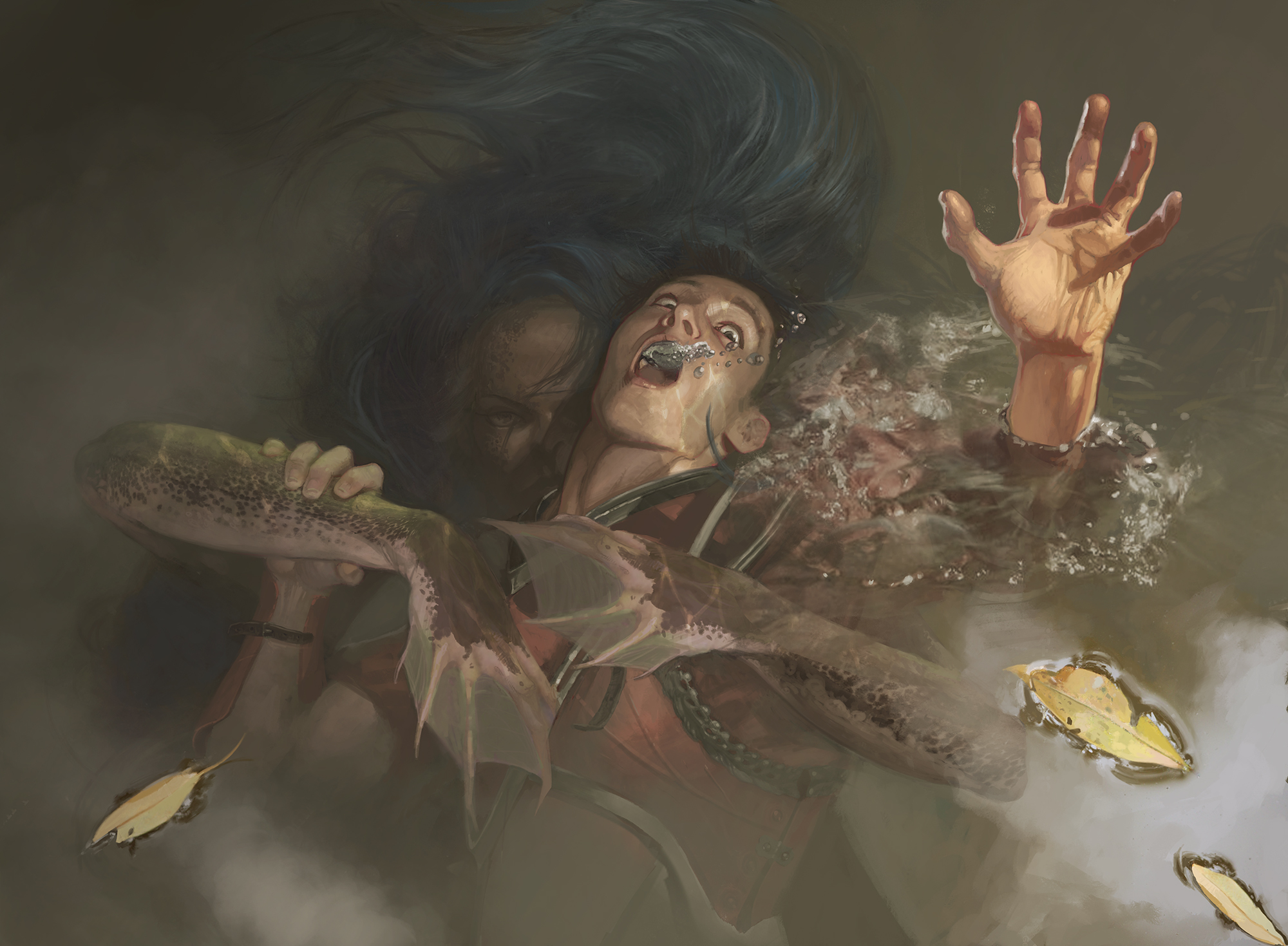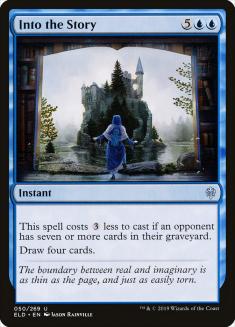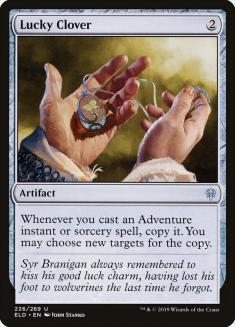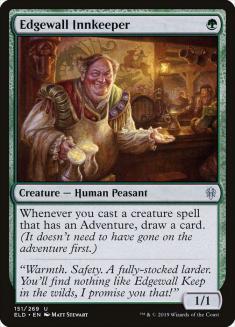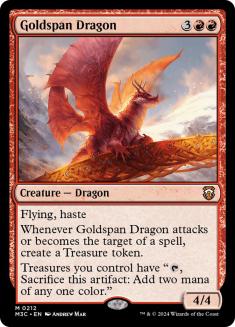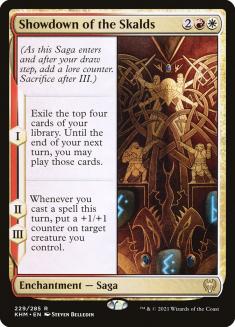The results from this past weekend’s SCG Tour Online events took me by complete surprise.
I just assumed the usual suspects would perform admirably and we’d learn some of the little things, like if Gruul Adventures is better than Naya Adventures against the field or whether Dimir Rogues does in fact have a good matchup against Izzet Midrange❄. Never in my wildest dreams did I think there’d be multiple flavors of Sultai and Rakdos to discuss, but here we are!
This news is exciting for a couple of reasons. For starters, these results point towards Kaldheim Standard being in a healthy place as no single strategy had a dominant performance. That’s something we haven’t really had in the early weeks of a format for a couple of years.
These results are also the perfect case study for a theory that’s been rattling around in my head for quite some time now. Well so I shouldn’t call it a theory as it’s more just the way I think about things when I’m trying to compartmentalize weekend results. Anyway, it’s pretty convoluted, and most likely pedantic, but I’ll do my best to not let it turn into another “Who We Are and Who We Are Not: Practical Ethics and Their Application in the Modern World: Moral Reasoning and the Human Paradox of Self-Preservation in Relation to the Social Contract; a Treatise on the Value of Universal and Mutually Beneficial Ethical Responses, as Displayed in Everyday Interactions.” [Copy Editor’s Note: Best. Bedtime. Reading. Ever.]
Standard decks no longer have the same feel as they once did. We of course still use terms like “Aggro” and “Control” to define them, but rarely do they feel like these one-dimensional decks these descriptors portray them to be. Instead, most decks in the metagame collectively seem to exist on a sliding scale composed of the same effects: early proactive elements, mid-game stabilizers, interaction, card advantage, and game-breakers. The combination is always unique with varying degrees of power level, but still the resemblances are there.
A potential catalyst for this could have been the introduction of the F.I.R.E. philosophy to modern card design. Whether it was this shift in philosophies or not, there are many factors going into why decks now look the way they do:
- A higher density of fully functional cards printed per set
- More access to high-quality card advantage and card advantage-adjacent effects
- More robust single-block set mechanics
- Higher-quality mana sinks
- Access to more robust mana acceleration and mana acceleration-adjacent effects
- The London Mulligan rule change
Simply put, it’s become less and less likely for either player to stumble in the developmental stages of a game, or to ever “attrition out” in the latter stages. Each deck just has enough card advantage, hand smoothing, and streams of “enters the battlefield” and “dies” triggers to keep them chugging along indefinitely. This shifts the focus away from attrition and towards other aspects of the game such as velocity, positioning, and snowballing.
The biggest effect this has had on Standard is now decks are much more robust and malleable to a higher range of situations. This increases the complexity of metagaming when new archetypes become introduced as each individual archetype now has a higher chance to appropriately react to the new deck’s existence and the “new” metagame that it may create.
This sends ripple effects throughout the entire metagame as a majority of the decks likely can adapt to survive. Each one of these decisions, however, has impacts on each other individual matchup. For example, Gruul Adventures replacing Vivien, Monsters’ Advocate with Goldspan Dragon improves some matchups at the cost of the Dimir Rogues matchup.
Rakdos Midrange/Sacrifice from Zendikar Rising Standard is a great example of just how malleable decks have become. Early on in that metagame, it was dense with Azorius-based Yorion, Sky Nomad strategies, with Dimir Rogues picking up in popularity to combat it. Here’s what Paulo Vitor Damo Da Rosa played in the first week of MPL League Play.
Creatures (22)
- 2 Rankle, Master of Pranks
- 2 Murderous Rider
- 4 Robber of the Rich
- 4 Bonecrusher Giant
- 2 Ox of Agonas
- 4 Mire Triton
- 4 Kroxa, Titan of Death's Hunger
Planeswalkers (2)
Lands (19)
Spells (17)

Shortly after, Dimir Rogues pushed out Azorius Blink strategies and Gruul Adventures picked up in popularity as a response to Dimir Rogues. There were smatterings of other decks like Mono-Green Food and Dimir Control, but the metagame was mostly dominated by those two strategies.
Creatures (14)
Lands (22)
Spells (24)

Eventually the metagame was dominated by Gruul Adventures, and other green decks like Temur Adventures and Mono-Green Food. Rakdos Sacrifice then took on its most aggressive anti-creature form, making it a nightmare matchup for this gang of green.
Creatures (19)
- 3 Rankle, Master of Pranks
- 2 Embereth Shieldbreaker
- 4 Bonecrusher Giant
- 4 Woe Strider
- 2 Ox of Agonas
- 2 Kroxa, Titan of Death's Hunger
- 2 Skyclave Shade
Lands (22)
Spells (19)

Three unique metagames with three unique takes on Rakdos Midrange. Now of course some of this archetype’s evolution stems from our communal understanding of how to properly tune the strategy, but that shouldn’t take away from the fact that each potential archetype has a much deeper pool of cards to call upon compared to many years ago.
So let’s apply this to the current shape of Kaldheim Standard. Last week it seemed like the masses were mostly focused on Gruul Adventures and whether to play white in it or Izzet Midrange❄. Oh, and a lot of people sleeping on Dimir Rogues. This made for some very predictable early SCG Tour Satellite metagames where these decks were the most-played strategies.
In the Satellites that followed, Rakdos Sacrifice became increasingly more popular as it was a great choice in combating a metagame filled with Izzet Midrange❄, Dimir Rogues, and Gruul/Naya Adventures. As it rose in popularity, so did Sultai strategies to prey on the increase of Rakdos Sacrifice. Well, I guess I can’t really comment on the reason why people started playing Sultai piles. I mean, it’s the best color combination in Magic, after all!
Seriously though, I really can’t tell you what caused Sultai to go from an outlier to matching Adventures in popularity at the SCG Tour Online $5K Kaldheim Championship Qualifier. Maybe Logan Nettles had something to do with it?
Creatures (5)
Lands (32)
Spells (44)
- 4 Cultivate
- 4 Omen of the Sea
- 4 Wolfwillow Haven
- 1 Kiora Bests the Sea God
- 4 Heartless Act
- 4 Emergent Ultimatum
- 2 Eliminate
- 4 Sea Gate Restoration
- 4 Jwari Disruption
- 2 Shadows' Verdict
- 4 Binding the Old Gods
- 2 Alrund's Epiphany
- 2 Behold the Multiverse
- 3 Esika's Chariot
Sideboard

Whatever the reason, in just three days the Standard metagame’s top decks went from Gruul/Naya Adventures, Dimir Rogues, and Izzet Midrange❄ to Rakdos Sacrifice, Sultai Control/Ramp, and Gruul/Naya Adventures. On top of that, two unique variants of Sultai took first and second place.
That’s a lot to unpack!
Gruul/Naya Adventures
Let’s start with Gruul/Naya Adventures, as it’s still likely the most popular deck in Standard and also a great tool to showcase proactive ways to approach my sliding scale “theory.”
Showdown of the Skalds proved to be a great card worthy of splashing for in the Adventure mirrors and against Rakdos Midrange, which makes sense, but came up short pretty much everywhere else. It’s just too slow against Boros Aggro, Dimir Rogues, and the new Sultai Ramp strategies.
This tells me one thing in particular: Gruul Adventures now has a build that combats Rakdos Sacrifice. Last season these two archetypes exchanged many blows as they were both tuned throughout the months, but it felt like Rakdos Sacrifice came out on top. Now it seems that things have changed as long as Gruul Adventures is willing to splash for Showdown of the Skalds.
That doesn’t mean the splash is appropriate right now however. As we all know, Sultai Ramp (Yorion) is preparing for a format takeover which should reduce the numbers of Rakdos pilots. If Sultai is successful in this endeavor, we may want to prepare Gruul’s rebuttal.
Creatures (29)
- 2 Scavenging Ooze
- 2 Embereth Shieldbreaker
- 4 Lovestruck Beast
- 2 Questing Beast
- 4 Edgewall Innkeeper
- 4 Bonecrusher Giant
- 4 Brushfire Elemental
- 4 Kazandu Mammoth
- 3 Goldspan Dragon
Lands (21)
Spells (10)
Sideboard

Splashing for countermagic is extremely easy in Gruul Adventures, and especially so when Goldspan Dragon is in the picture. This build of the deck would most likely come into play when a deck like Sultai Ramp takes a stranglehold over the format or shares top billing with another controlling matchup like Abzan or Esper Blink built around Doom Foretold. This is unlikely to happen of course, but is something we can theorize and have in our back pocket for a rainy day.
Something else that’s possibly chilling out is a small Snow splash for removal. This would come into play when it seems like Dimir Rogues and Boros Aggro are picking up in popularity due to [insert hypothetical situation here]. Again, extremely unlikely this will ever get called upon as a successful strategy. It’s just fun to theorize about.
Creatures (28)
- 2 Scavenging Ooze
- 2 Embereth Shieldbreaker
- 4 Lovestruck Beast
- 2 Questing Beast
- 4 Edgewall Innkeeper
- 4 Bonecrusher Giant
- 4 Brushfire Elemental
- 4 Kazandu Mammoth
- 2 Goldspan Dragon
Lands (20)
Spells (12)

Sultai Ramp (Yorion) and Sultai Control (Yorion)
Now it’s time to look at things more reactively and consider if it’s correct to pick up Sultai Ramp (Yorion) after its most recent successes. The first question you have to ask yourself is, “How much can the other decks in the metagame react to its existence?”
Creatures (6)
Lands (30)
Spells (45)
- 4 Cultivate
- 4 Omen of the Sea
- 1 Kiora Bests the Sea God
- 3 Elspeth's Nightmare
- 2 Shark Typhoon
- 2 Extinction Event
- 4 Heartless Act
- 4 Emergent Ultimatum
- 3 Eliminate
- 2 Mazemind Tome
- 1 Bala Ged Recovery
- 2 Sea Gate Restoration
- 2 Jwari Disruption
- 3 Shadows' Verdict
- 4 Binding the Old Gods
- 2 Alrund's Epiphany
- 2 Esika's Chariot

Odds are that Rakdos Sacrifice numbers will come down if Sultai Ramp (Yorion) numbers go up. Sure Rakdos Sacrifice pilots might try more aggressive builds of the deck featuring Rankle, Master of Pranks and Egon, God of Death, but that doesn’t sound fruitful. Instead Rakdos pilots may need to wait for the metagame to shift away from Sultai Ramp (Yorion) entirely.
If Rakdos does reduce in numbers, then Dimir Rogues numbers surely climb back up as it has difficulty with Rakdos Sacrifice. Dimir Rogues also has a good matchup against most builds of Sultai given how much of the deck plays at sorcery speed.
As the metagame begins to shift for the potential Sultai Ramp (Yorion) threat, it might open itself up to a more flash-based Sultai deck without even knowing it. I’m not even talking about the builds with Llanowar Visionary that did well this past weekend either, as those are just asking to lose to bigger versions of the mirror.
I’m talking about the build that I was promoting last week!
Creatures (3)
Lands (36)
Spells (41)

These builds of Sultai Control (Yorion) have not felt great against decks with Showdown of the Skalds, but luckily it seems like those numbers should also be dropping. Things are getting a little more blue, leading to a rise in the value of counterspells and Mazemind Tome. I’ve only played a few matches with this deck so far, but I have liked what I’ve been seeing.
Dimir Rogues
In the end though, I believe the strongest deck choice at this exact moment to be Dimir Rogues. This deck has proven to be the best to play when the metagame is distracted and it seems like Sultai Ramp (Yorion) has done just that. It threatens to push out Dimir Rogues’s worst matchup (Rakdos Sacrifice) while being a good matchup itself. Also, most of the moves the rest of the metagame will make to adapt to Sultai Ramp (Yorion) should be favorable for Dimir Rogues.
Creatures (15)
Lands (22)
Spells (23)


